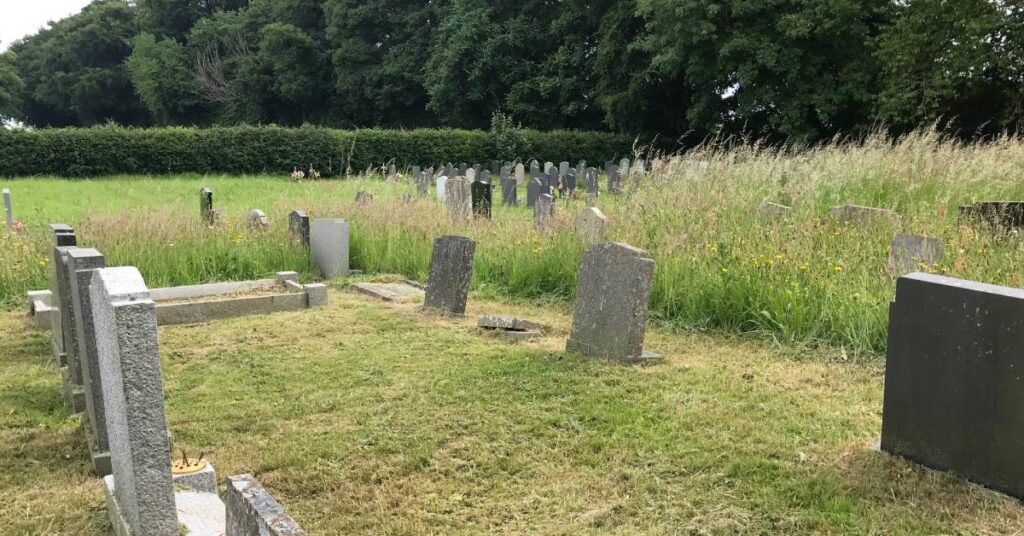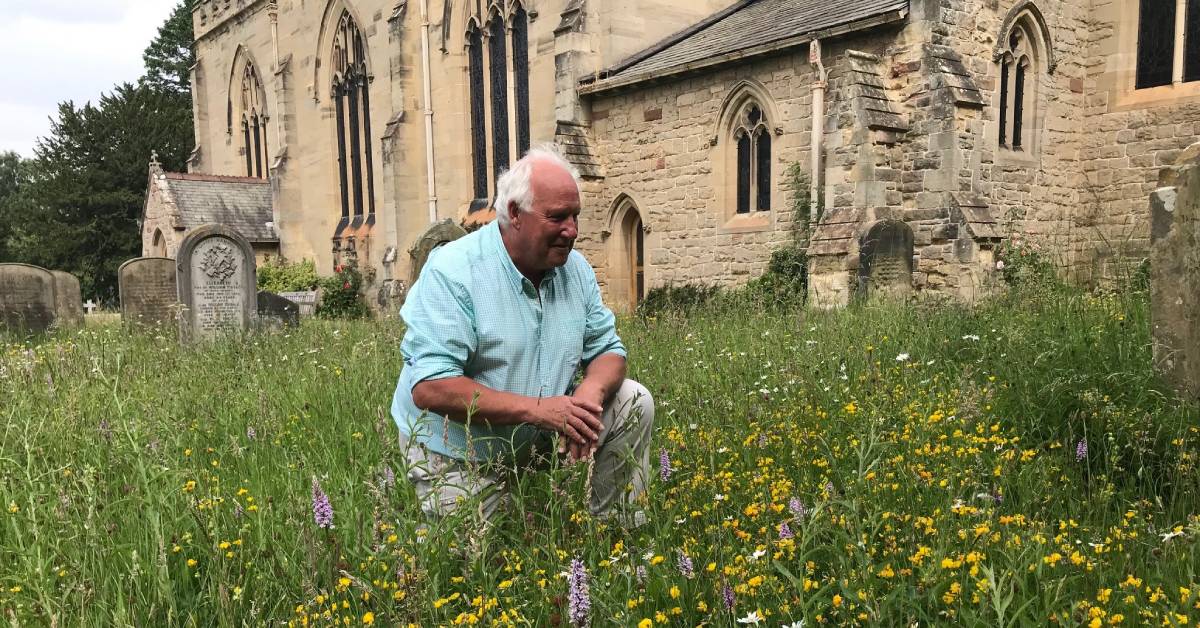This year has seen a lively debate about the merits of leaving grass to grow in public areas such as the Stray, cemeteries or on roadside verges to benefit bio-diversity.
For three decades, Simon Warwick, director and trustee of the Lower Ure Conservation Trust, has been involved in a programme of activity focused on the churchyard at St John’s Church in the village of Sharow, where he lives.
The long grass close to some graves is part of a planned re-naturalising regime.
Mr Warwick, who has been honoured with an MBE in recognition of his lifelong work as a conservationist, told the Stray Ferret how re-naturalising is different from re-wilding:
“Today’s landscape is very different from the one our ancestors would have known .
“It is now largely a ‘tidy’ and ‘ordered’ landscape, of arable monoculture and species-poor grass in which wildlife, in many cases, struggles to thrive

Graves among the grass – some long, some short, is part of a planned and managed programme of re-naturalising
“Much of our native wildlife is adapted to a richer mosaic of habitat; a tapestry, a varied environment.
In the case of species-rich grassland, this is often a result of active management, reflecting traditional farming methods.
“In the case of the churchyard at St John’s, Sharow, the management follows that of a traditional hay meadow.
“We will cut the area on the summer meadow until early April, then let it grow, flower and largely set seed; only cutting it for hay in mid-July.
“Essentially it is allowed its ‘head’ for about 14 weeks of the year and after that mown short, with all the cuttings removed (essential to lower nutrient levels); this practice follows the tradition of early spring grazing, a hay cut and an ‘aftermath’ graze.”
“The end result is spectacular, with a carpet of wildflowers in May and June. Mr Warwick said it is always a little painful to cut it for hay, when it is alive with butterflies, bees and beautiful burnet moths.
“However, despite what seems like a damaging act, the cut and remove process is central to maintaining a species-rich are”So why is long grass often species-poor?
“The simple answer is that many species of wildflowers and grasses are easily shaded out, dead vegetation increases fertility, which in turn encourages rank species to grow.
“Sharow churchyard is special, the principle reason being that when the land was consecrated in the 1800s, it was almost certainly an established hay meadow.
“Irregular cutting and perhaps grazing by the Dean’s sheep will have maintained many of the old meadow species. Having managed the churchyard in a traditional manner now for 30 years, it has duly been recognised for its importance on a county and national level.
“Whilst the summer meadow is in many ways the gem of the churchyard, the spring meadow is managed similarly but left to flower from early-March to the cut in late June, followed by regular mowing. Spring is a riot of wild daffodils, bluebells, violets and wood anemones.
“Other areas, accommodating more modern graves, are cut perhaps every week to six weeks; other bits only once a year, or even longer.
“So, you may ask ‘which way is the right way?’ and the answer is that they sort of all are!
“We have lost the connection with the traditional mosaic of our natural and managed landscape; no real surprise that we have lost so much of our native wildlife. We need to re-welcome a tapestry back into our landscape and be less ‘tidy.!”
Read more:
- Council accused of cutting costs instead of the the grass in Ripon
- Mixed views on re-wilding in Harrogate





